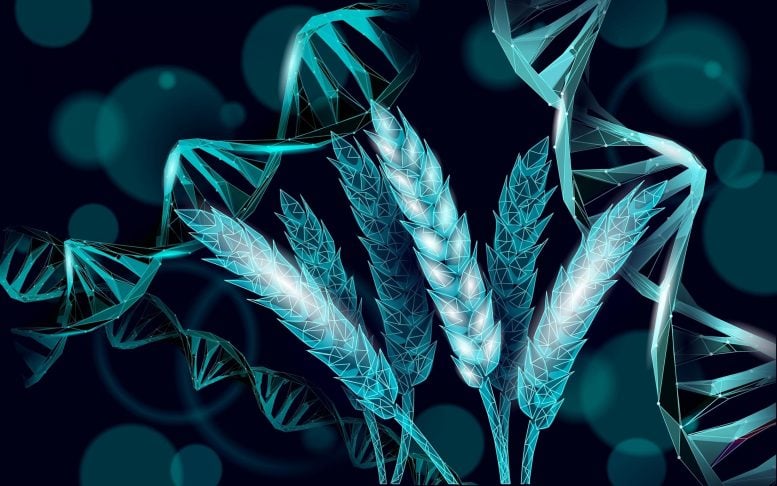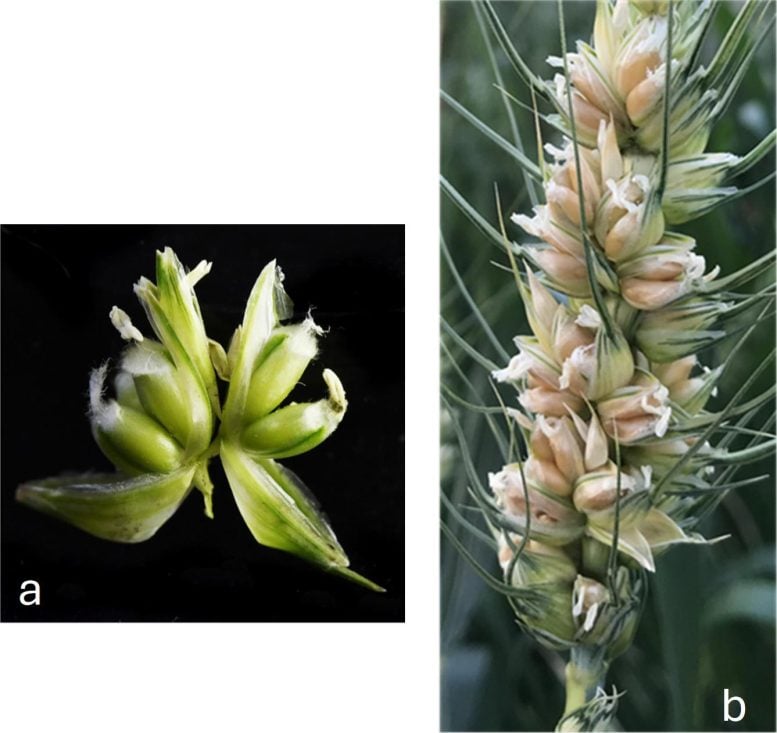
Posted on 10/21/2025 6:50:13 AM PDT by Red Badger

A once-silent wheat gene may hold the secret to growing far more grain from every field. Credit: Shutterstock
======================================================================
Scientists at the University of Maryland have uncovered the genetic key behind a rare wheat variety that produces three grains where ordinary wheat grows just one.
The team found that a normally inactive gene, WUSCHEL-D1, becomes active early in flower development, causing the plant to form extra ovaries that can each grow into a grain. This discovery could allow breeders to develop new, higher-yielding wheat varieties without needing more land or resources, offering a major step toward meeting global food demands in a changing climate.
Unlocking a Genetic Secret in Wheat
Researchers at the University of Maryland have identified the gene responsible for a rare wheat variety that develops three ovaries in each flower instead of just one. Because every ovary can grow into a grain, this finding could greatly increase the amount of wheat produced per acre. The discovery was detailed in the Proceedings of the National Academy of Sciences on October 14, 2025.
The unusual three-ovary trait was first found in a naturally occurring mutant of common bread wheat, but scientists did not initially know what caused it. To uncover the genetic difference, the Maryland team created a precise map of the mutant wheat’s DNA and compared it with that of ordinary wheat. Their analysis revealed that a normally inactive gene, known as WUSCHEL-D1 (WUS-D1), had been activated. When WUS-D1 turns on early during flower formation, it enlarges the floral tissue and allows the plant to produce additional female organs such as pistils or ovaries.

A representative MOV-wheat spikelet (a) and spike (b) showing the effect of the Mov-1 locus on grain number. Regular bread wheat has one grain per spikelet. Credit: Vijay Tiwari, University of Maryland
============================================================================
Turning Genes Into Yield Boosters
If scientists and breeders can learn to trigger this same process, they may be able to develop new wheat varieties that produce more kernels on each plant. Even small increases in kernel number could have a major impact on the world’s food supply.
“Pinpointing the genetic basis of this trait offers a path for breeders to incorporate it into new wheat varieties, potentially increasing the number of grains per spike and overall yield,” said Vijay Tiwari, Associate Professor of Plant Sciences and co-author of the study. “By employing a gene editing toolkit, we can now focus on further improving this trait for enhancing wheat yield. This discovery provides an exciting route to develop cost-effective hybrid wheat.”
Feeding the Future Without More Land
That’s important because wheat is one of the world’s staple crops, feeding billions of people every day. As global demand for wheat continues to rise, climate change, limited farmland, and population growth make it increasingly difficult to increase production using traditional methods. This discovery could give breeders a powerful new tool to boost yields without needing more land, water, or fertilizer.
The discovery of WUS-D1 could also lead to the development of similar multi-ovary varieties of other grain crops.
Reference:
“WUSCHEL-D1 upregulation enhances grain number by inducing formation of multiovary-producing florets in wheat”
by Adam Schoen, Guilherme V. Yoshikawa, Parva Kumar Sharma, Alex Mahlandt, Yi Chen, Huajin Sheng, Leon Kochian, Peng Gao, Daoquan Xiang, Teagen D. Quilichini, Prakash Venglat, Sheng Wang, Inderjit Singh Yadav, Robert Sablowski, Yuqi Wang, Peng Zhang, Annabel Whibley, Amy Hill, Yong Gu, Daniel Rodriguez-Leal, Weifeng Luo, Yiping Qi, Nathan Meier, Anmol Kajla, Matthew Willman, Gina Brown-Guedira, Sheron A Simpson, Ramey C. Youngblood, Amanda Hulse-Kemp, Angus Murphy, Bikram Gill, Cristobal Uauy, Raju Datla, Nidhi Rawat, Scott A. Boden and Vijay Tiwari, 14 October 2025, Proceedings of the National Academy of Sciences.
DOI: 10.1073/pnas.2510889122
==========================================================================
In addition to Dr. Tiwari, other authors of this paper from the University of Maryland Department of Plant Sciences include lead author and faculty assistant Adam Schoen, Professor Yiping Qi, Professor Emeritus Angus Murphy, Associate Professor Nidhi Rawat, Assistant Professor Daniel Rodriguez-Leal, Assistant Research Scientist Weifeng Luo, PhD student Anmol Kajla, Post Doctoral Associate Parva Kumar Sharma, and Alex Mahlandt (a former MS student from Tiwari lab).
This work was supported by the U.S. Department of Agriculture’s National Institute of Food and Agriculture (Awards 13716674 and 13368004), the Australian Research Council (FT210100810), the Royal Society (UF150081), and the Yitpi Foundation. The views expressed in this story do not necessarily reflect the views of these organizations.
“They” didn’t ruin the tomato. You can still get all the heirloom tomatoes you want. Some crunchy granola grocery will be selling them, or a local farmer’s market, or a roadside stand. Or you can grow them yourself in your backyard.
You can eat all the fresh heirloom tomatoes you want ... for a few weeks, in season. But if you want fresh tomatoes out of season, you will have to settle most of the year for tomatoes transported long distances. That translates into varieties developed to hold up under the handling, shipping and shelf life constraints of a global food chain.
Are the heirloom tomatoes better? I will leave that up to the tomato aficionados. Personally, I think the best and highest use of tomatoes is in pizza or spaghetti sauce, and the canned tomato products are ok by me.
But no one is stopping you from getting the heirloom varieties, and eating them when they are so fresh and ripe that they bruise when you look at them. You can have mine. All I want is pizza and spaghetti year-round.
Insects eat or ruin about 38% of food crops every year. Animals can eat only a fraction of this.
I seem to remember that the highest single mass of living things is ants.
Believe what you want. I haven’t had a real tomato in ages. I generally pick them out of whatever they are in because they are so bad. Bad texture, color and taste. Some of it is because they are grown in hot houses. But they always messing with Garden foods to make them grow faster and be more bug resistant. Tomato’s are suppose to be orange to red. They are supposed to pretty much melt in your mouth, and have a nice tangy flavor. They are not supposed to be like cellulose or have a white color. They are not supposed to be flavorless or have chemical taste like they do today.
Buy different varieties of tomatoes. You might have to start shopping somewhere else, assuming you live within range of other options. Or grow them yourself, and enjoy them when they’re in season.
I live in an area with plenty of choices. I know that not everyone does.
Disclaimer: Opinions posted on Free Republic are those of the individual posters and do not necessarily represent the opinion of Free Republic or its management. All materials posted herein are protected by copyright law and the exemption for fair use of copyrighted works.